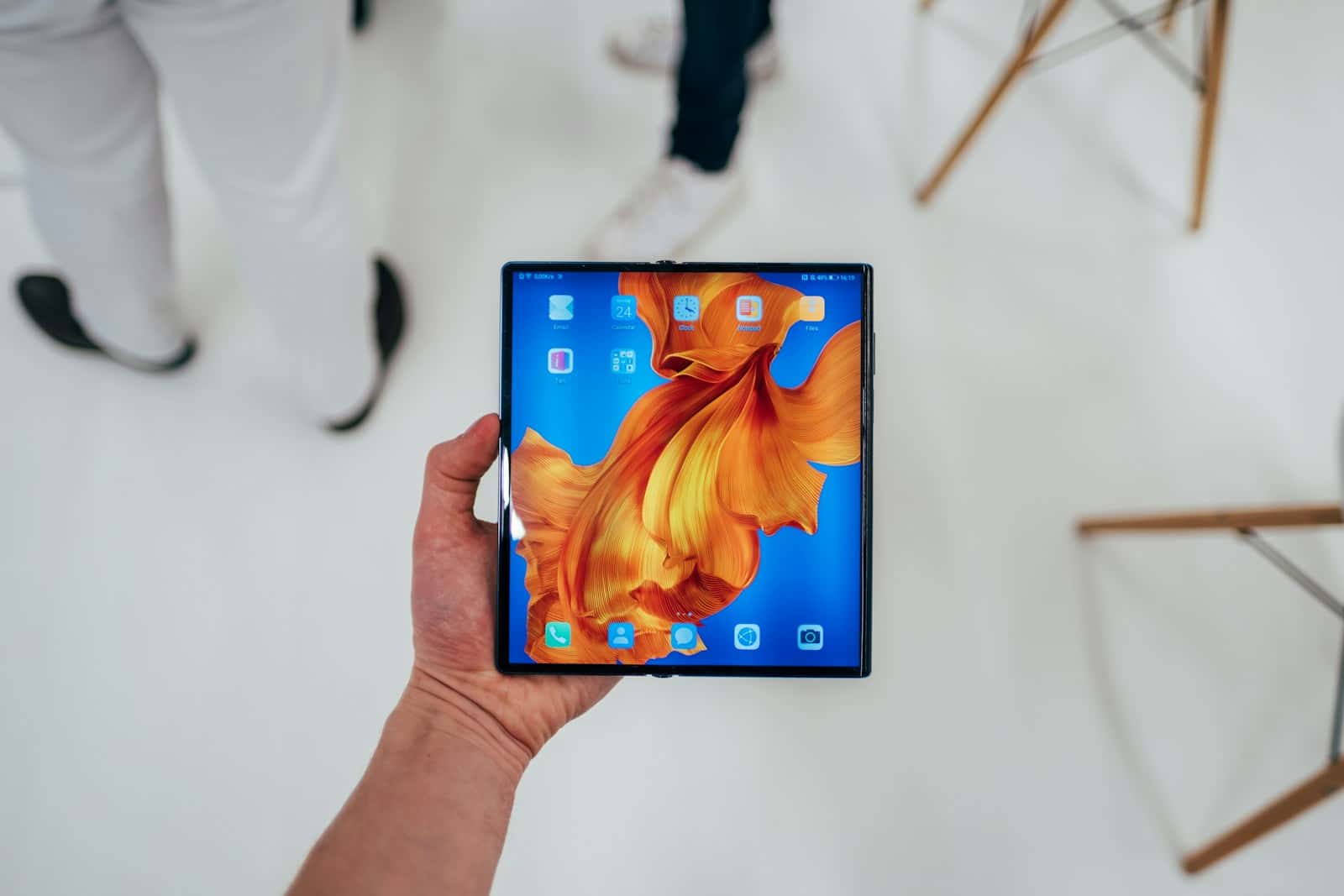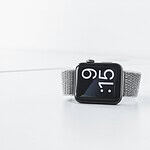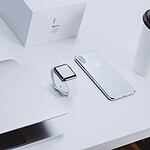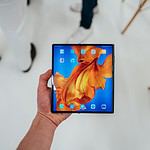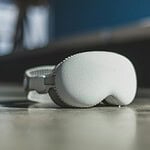Apple’s long-rumored foldable iPhone may finally become a reality. Tech enthusiasts have eagerly awaited this innovative device for years, while competitors like Samsung and Google have already released their own foldable smartphones. Recent reports suggest Apple could launch its foldable iPhone as early as 2026, potentially revolutionizing the smartphone market once again.
The tech giant has remained characteristically tight-lipped about its plans for a foldable device. However, industry insiders and supply chain sources hint at ongoing development and prototyping. Apple’s approach to new technology often involves perfecting it before release, which may explain the company’s delayed entry into the foldable phone market.
As speculation grows, questions arise about the potential design, features, and price point of a foldable iPhone. Will it follow the book-style fold of Samsung’s Galaxy Z Fold series, or opt for a clamshell design like the Galaxy Z Flip? Apple’s reputation for premium pricing also raises concerns about accessibility for the average consumer.
The Bendable Future: Exploring the Foldable Phone Landscape
Apple’s Upcoming Entry
Rumors about a foldable iPhone are intensifying, with growing reports indicating that Apple is close to selecting a display supplier. This decision will have significant implications across the entire foldable phone market, affecting factors such as pricing, durability, and overall design.
It’s becoming more and more likely that Apple will finally release their first foldable phone in 2026, although Apple remains typically quiet on the matter and they haven’t confirmed anything just yet. But when you look at industry analysts and supply chain information, it suggests that the company is ready to make a substantial entry into the space. This move could reshape the foldable phone landscape, potentially legitimizing the form factor and encouraging mainstream adoption and give competitors like Samsung a serious competitor.
The Display Dilemma
The heart of any foldable phone lies in its display. Creating a screen that can repeatedly bend without creasing, cracking, or losing image quality is a monumental engineering challenge. Apple’s selection of a display supplier is therefore paramount. Several companies are vying for this lucrative contract, each with their own strengths and weaknesses. The chosen supplier will likely dictate the type of foldable display used (e.g., flexible OLED, foldable glass), which in turn impacts the device’s thinness, weight, and overall aesthetic.
Hinge Hurdles and Design Decisions
Beyond the display, the hinge mechanism is another critical component. It needs to be both robust enough to withstand thousands of folds and subtle enough to allow for a seamless user experience. Apple’s patents offer glimpses into various hinge designs they’ve explored, ranging from complex gear systems to simpler, more streamlined solutions. The hinge’s design will not only affect the phone’s durability but also its form factor. Will Apple opt for a clamshell-style fold, a book-style fold, or perhaps something entirely new?
Software’s Starring Role
A foldable phone is more than just a flexible screen and a clever hinge. The software needs to adapt to the unique capabilities of the form factor. iOS will need to seamlessly transition between different screen sizes and aspect ratios as the device is folded and unfolded. Apple will also need to consider how apps will behave in these different configurations. Will developers need to rewrite their apps to take full advantage of the foldable display? These are questions Apple’s engineers and designers must already be answering.
The Competition Heats Up
Apple won’t be entering the foldable phone market in a vacuum. Samsung, Motorola, and other manufacturers have already released foldable devices, each with its own set of strengths and weaknesses. Samsung, in particular, has been a pioneer in this space, releasing multiple generations of foldable phones. Apple will need to differentiate its offering to stand out from the crowd. This could involve focusing on unique software features, superior hardware performance, or a more refined design aesthetic.
What Will it Cost?
Foldable phones currently command a premium price tag. This is due to the high cost of manufacturing the complex displays and hinge mechanisms. Apple’s entry into the market could potentially drive prices down, but it’s unlikely that a foldable iPhone will be cheap. The final price will depend on several factors, including the cost of the display, the complexity of the hinge, and Apple’s overall pricing strategy.
The Foldable Future
The foldable phone market is still in its infancy, but it has the potential to revolutionize how we interact with our mobile devices. Apple’s entry into this space could be a watershed moment, signaling the arrival of foldable phones into the mainstream. While many questions remain unanswered, one thing is clear: the future of mobile is flexible.
Comparing Foldable Phone Options
| Feature | Samsung Galaxy Z Fold5 | Motorola Razr 40 Ultra | Potential Foldable iPhone |
|---|---|---|---|
| Form Factor | Book-style | Clamshell | Unknown |
| Display Technology | Foldable AMOLED | Foldable AMOLED | Likely Foldable OLED |
| Hinge Design | Complex gear system | Rotating hinge | Unknown |
| Price | High | Mid-range to High | Likely High |
| Software | Android | Android | iOS |
Beyond Smartphones: Foldable Tech’s Expanding Horizon
The potential of foldable technology extends far beyond smartphones. Imagine a foldable tablet that can transform into a laptop, or a foldable laptop that can easily slip into your bag. Apple has also been exploring foldable display technology for other devices, including tablets and even MacBooks. While a foldable iPhone might be the first step, it could pave the way for a whole new generation of flexible devices. This could lead to more versatile gadgets that adapt to different use cases, blurring the lines between traditional device categories. The future of computing could very well be foldable.
Key Takeaways
- Apple may release a foldable iPhone in 2026, joining competitors in the flexible display market
- The design and features of the potential foldable iPhone remain unknown but highly anticipated
- Pricing and consumer accessibility will be crucial factors in the success of Apple’s foldable device
Unfolding Apple’s Vision for Foldable Devices
The smartphone market is poised for transformation with the potential arrival of a foldable iPhone. This development could signal a paradigm shift, offering more adaptable and versatile devices. However, challenges such as complex display technology and innovative hinge designs must be addressed.
Apple’s involvement would not only validate the foldable form factor but also spark further innovation. The article discusses the latest news, technological hurdles, the impact of a foldable iPhone on the mobile landscape, comparisons with existing foldable phones, and future prospects for foldable technology in various devices.
Apple’s rumored foldable devices promise innovative features and cutting-edge technology. The company’s approach to design and functionality could redefine the smartphone and tablet markets.
Potential Features and Design Aesthetics
Apple’s foldable iPhone, potentially named “iPhone Flip,” may sport a 7-inch or larger screen when unfolded. The device could feature a clamshell design, similar to Samsung’s Galaxy Z Flip series. This form factor would allow for a compact folded state that expands into a tablet-like experience.
The external screen might offer quick access to notifications and basic functions. Apple’s focus on aesthetics suggests a sleek, minimalist design with premium materials. The company may prioritize reducing or eliminating visible creases in the flexible display.
Durability will likely be a key consideration, with Apple potentially developing new hinge mechanisms and protective coatings for the foldable screen.
Industry Experts and Analyst Predictions
Ming-Chi Kuo, a respected Apple analyst, predicts mass production of the first foldable iPhone could begin in 2025. This timeline aligns with other industry forecasts, suggesting a possible launch in 2026.
Analysts expect Apple to take a cautious approach, perfecting the technology before release. The company’s entry into the foldable market could drive wider adoption and set new industry standards.
Some experts speculate that Apple may introduce a foldable iPad before the iPhone. This strategy could allow Apple to test and refine the technology on a larger scale.
Technological Enhancements and Display Innovations
Apple is likely developing custom flexible OLED panels for its foldable devices. The company may partner with display manufacturers like Samsung or LG to produce these screens.
Display size options could range from 7 to 8 inches for the iPhone Flip, while a foldable iPad might feature a 20-inch screen when fully opened. Apple may implement advanced color calibration and brightness controls to ensure display quality matches its non-folding devices.
The company could introduce new touch sensitivity features or stylus support tailored for foldable screens. Apple may also develop software optimizations to take full advantage of the varying screen sizes and configurations.
Battery and Charging Technologies
Foldable devices present unique challenges for battery design and placement. Apple may opt for a split battery configuration, with cells positioned on both sides of the fold.
The company could introduce new power management features to optimize battery life across different usage modes. Wireless charging capabilities, including MagSafe and the new Qi2 standard, are likely to be incorporated.
Apple might develop specialized charging accessories for foldable devices. Fast charging technology could be enhanced to accommodate the potentially larger battery capacities of these new form factors.
Frequently Asked Questions
Apple’s potential entry into the foldable smartphone market has generated significant interest and speculation. Many consumers are eager to learn about the rumored device‘s features, release timeline, and how it might compare to existing foldable phones.
When is Apple anticipated to release a foldable iPhone model?
Current reports suggest Apple may launch its first foldable iPhone in the second half of 2026. This timeline aligns with the expected release of the iPhone 18 lineup.
Apple’s typical product development cycle involves extensive testing and refinement. The company often prioritizes perfecting technology before bringing it to market.
What will be the price range for the rumored iPhone Fold?
Precise pricing details remain unconfirmed. Industry analysts speculate the foldable iPhone could cost more than current high-end iPhone models.
Existing foldable smartphones from competitors often carry premium price tags. Apple’s version may follow this trend, potentially exceeding $1,500.
Are there any confirmed details about the specifications of the upcoming foldable iPhone?
Apple has not officially announced any specifications for a foldable iPhone. The company maintains strict secrecy around unreleased products.
Rumors suggest Apple is exploring various designs and technologies. These may include flexible OLED displays and advanced hinge mechanisms.
How will Apple’s foldable device differ from existing foldable phones by competitors?
Apple’s approach to foldable technology remains unknown. The company’s history suggests a focus on user experience and seamless integration with its ecosystem.
Potential differentiators could include innovative software features, unique form factors, or advancements in durability and usability.
Will Apple venture into the flip phone market with a new product in 2025?
There is no credible information suggesting Apple will release a flip-style foldable phone in 2025. Most reports indicate a later timeframe for Apple’s first foldable device.
Apple’s product strategy often involves careful market analysis and technological readiness before entering new categories.
What factors might be causing the delay in Apple’s entry into the foldable smartphone market?
Several factors could contribute to Apple’s measured approach to foldable devices. These include:
- Ensuring product reliability and durability
- Refining user interface and software experiences
- Waiting for component costs to decrease
- Observing consumer adoption and feedback on existing foldable phones
Apple’s strategy often prioritizes perfecting technology over being first to market.

